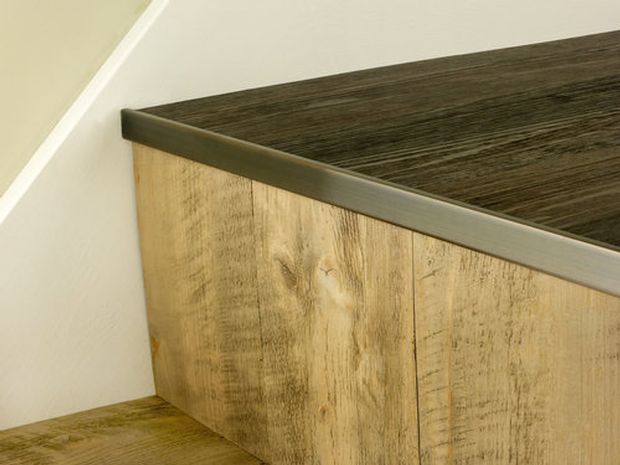Feature Steps: Everything You Need to Know

Remodelling or renovating your hallway or staircase is the ideal opportunity to create a new, unique feature for your home. One of the most simple but popular new ways to do this for your property is to create a feature step. But what exactly is a feature step?
We’ve got everything you need to know on feature steps here in this guide, including how to find other ways you can turn your stairs into a talking point for guests.
What Is a Feature Step?
A feature step is, typically, a larger step at the bottom of your staircase. It stands out more compared to other steps. To accommodate a feature step, a staircase’s newel posts are usually set back, leaving a gap with no balustrade.
What is the Purpose of a Feature Step?
There are several purposes to having a feature step on a staircase. The first, naturally, is that it creates an eye-catching feature for a staircase or hallway in a property. Beyond this, it can also act as a starting point for exploring other design possibilities and options that you can add to your staircase and the spaces around it.
Opening up the bottom of your staircase with a feature step also offers a practical benefit. It allows the staircase to be approached from multiple angles, meaning moving around your home is made more natural. This also creates an elegant “sweep” from stairway to floor, which is often exacerbated by making the feature step timber on a timber floor, before transitioning to carpet for the rest of the steps.
Styles for Feature Steps
There are, in essence, two main styles that you can choose for feature steps. These are bullnose and curtail styles. However, they can also be doubled up on, in order to create an even more unique feature that we shall discuss in more depth below.
Bullnose
This variety is often used when the stairs are against the wall on one side. It has rounded corners which join the front edge to the side of the first newel post. It’s simple to create and offers a smooth and elegant look to the beginning of your staircase.
Curtail
The design of a curtail feature step is considered grander than that of a bullnose. The bottom step wraps around the first newel post or posts in this style, making the stairs even easier to access than before. Both experts and home DIYers feel that this style adds a little more character to a staircase and that the design appeals to both carpet and the use of full wood on staircases.
Bullnose and Curtail
If you are interested in an even more unique design for your staircase, you can always choose to combine both feature step styles. This is possible by placing one on top of the other. Usually, this will mean installing a large curtail step at the base of the staircase, then fitting a smaller bullnose step on top. The look can then be enhanced from there with a range of accessories.
Can You Change the Shape of a Feature Step?
It is always possible to decide on a different shape for your feature step. If you are not interested in having a rounded step for your stairs, you can always opt for a square or a rectangular shape instead. Many consider it a more modern alternative, and they are just as easy to adapt to suit your needs and requirements. They will also be just as unique and still stand out as a feature.
Finish Your Stair Design with Accessories
If you have everything you need in the way of designs for your newly remodelled staircase, you might start to think about accessories that will complete the aesthetic appeal. We can offer a myriad of options for stylish plain or patterned, modern or traditional stair runners. These are then complemented by pairing them with stair rods in high-quality finishes.
Runners will protect your staircase from damage, so your feature step will be kept in its best condition for a long time to come with our accessories. We also offer free UK delivery on orders over £75.


